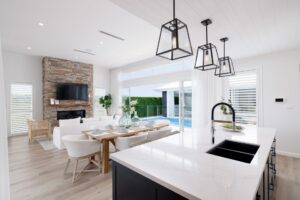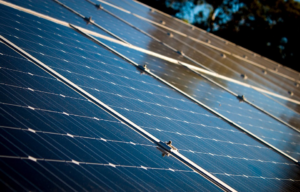Sustainable homes have never been more needed. As the world faces many challenges – the climate crisis, depleting natural resources, ageing populations and rapid expansion of urban environments – we all have a responsibility to make decisions about how we build our homes.
“The pursuit of sustainability best captures how society should respond to these challenges,” says Avi Friedman, author of Future Homes: Sustainable Innovative Designs, a new book from Images Publishing. “The point of sustainability thinking in its most rudimentary form is to consider the future consequences of current actions.”

A sustainable home is designed to respect natural resources by optimising energy and water consumption; a home that incorporates quality systems that ensure durability and uses low-impact, high-performance materials that are efficient in terms of manufacturing, shipping and installation.
Features such as location, size and orientation should be carefully considered in the early stages of planning a new build. For example, a more sustainable design will take advantage of natural light and air flow to naturally heat and cool the home. This consideration will bring long-term benefits to both the household and the environment by reducing the energy consumption of cooling and heating systems.
The same applies to the size and layout of the house. Smaller homes are above all more efficient, use less materials for construction and require less energy to operate. Smaller homes aren’t the best option for everyone. However, when building a sustainable home, it’s important to respect your resources and think about how much space you actually need to live comfortably and not overdo it.
The benefits of building a sustainable home are constant and worthwhile if your goal is to reduce waste and improve energy and water use. In addition, planning and building with long-term thinking will help you significantly extend the life of your home. Durable, quality building materials, and sustainable designs will ensure your sustainable home is built for the future.
Sustainable design, building materials and methods are key to the overall performance outcome of your home. However, there are other elements to consider when planning the details.
Passive solar design
Passive design takes into account the existing environment to create more efficient spaces. Work with your orientation to take advantage of natural light and maintain a comfortable temperature in your home.
High performance windows
Windows are responsible for more than 50% of energy lost in homes. When building a sustainable house, consider new technologies such as double glazing, special coatings and non-conductive frames. You can also adapt your choice of windows to the climate in which you live. Low-glare and double-glazed windows are great for warmer climates, while insulated frames, triple-glazed windows and draft-blocking designs are best for cooler climates.
Energy-saving devices
Think long-term when furnishing your new sustainable home. Appliances with a high energy rating may be more expensive in the store, but they will save you a lot of money in the grand scheme of things. Pay attention to kitchen and washing machines and central heating.

Drip irrigation system for plants
Not surprisingly, eco-friendly houses are surrounded by greener landscapes. Nevertheless, could maintaining cost you and the environment more than it’s worth? Reap the benefits of a beautiful garden without the guilt by integrating a drip irrigation system that uses gravity to deliver water to plants through the roots.
Use of eco paints and water-based paints
When painting your home, choose a low-VOC paint that’s better for your home and the environment. Eco-friendly paints are less toxic to produce and will improve the air quality in your home.
Renewable energy solutions
Talk to your energy supplier about renewable energy solutions. Rooftop solar panels are taking Australia by storm and could have huge benefits for your home and lifestyle. Your home could run entirely or partially on clean, renewable energy, which is good for the planet and your electric bill.
Recycle and reuse construction waste
During construction, recycle where possible and consider what materials you can save and use in the future. You can also sell building materials that have residual value instead of sending them straight to landfill.
Install a cool roof
Cool roofs reflect the sun’s heat instead of absorbing it, which can have a major cooling effect on the interior of your home.
Install a smart meter
Smart home systems are not only convenient, they are incredibly useful for energy efficiency. Smart meters can connect to and control your devices to automate certain tasks, such as turning devices on and off at specific times.
Insulation of a new home is extremely important and one of the main characteristics of sustainable houses. Good insulation will retain hot air in the summer and warm air in the winter. This increases the energy efficiency of the home by reducing the need for air conditioning and heating.
There is a common misconception that more sustainable homes are also more expensive to run and maintain. However, this is not the case! Eco-friendly houses benefit the environment and your finances, which applies to construction as well as others. Sustainable design elements are easy to incorporate into your new construction and can set you on the path to a greener lifestyle.
When it comes to building a sustainable home, build with the future in mind. Consider your energy use, location, insulation and building materials and how they can be used to create a home that will have a long-term positive impact on your lifestyle.






